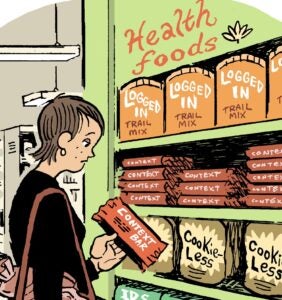“Data-Driven Thinking” is written by members of the media community and contains fresh ideas on the digital revolution in media.
Today’s column is written by Todd Wooten, founder and president at VRTCAL.
The news around ID deprecation and privacy regulations is important and overwhelming. But while those conversations are necessary, we also need to face a more immediate question. What should app developers do to prepare for the future?
Soon, IDs won’t be available on 70%-90% of the ad requests. Moreover, attribution isn’t what it used to be. Despite this pressure, the performance advertising model won’t go away, but it will lean closer to the CPM model.
We’ve seen the percentage of ad requests without IDs decline for quite some time. We ran an impact study when Apple’s deprecation news first shocked our industry and found, to our surprise, many apps had less than half their ad requests with device IDs. Why? A growing number of users already don’t want to be tracked.
This is an exciting brand advertising opportunity for app developers. If developers already have a large percentage of ad requests without device IDs, then adding their valuable supply-side data for brand campaigns benefits advertiser targeting, right? As the number of ad requests with device IDs declines, the opportunity grows and becomes more timely.
Until now, brand advertising on apps focused heavily on programmatic targeting based on third-party data via IDs. Even successful campaigns without third-party data targeting can be improved with direct data from apps. And as we move toward new privacy-centric models, app developers will see the value of their direct data increase. Using direct data they can source and control, app developers can reduce their reliance on the performance advertising model, while simultaneously increasing revenues as brands look for ROI beyond third-party targeting.
Packaging the data
App developers have access to three types of data, each of which can be leveraged with privacy and brand safety in mind.
- First-party data such as demographics, interests and purchase intent provided by the users.
- Contextual data sourced from the content.
- Device data available on the mobile device.
How can those types of data be gathered, passed to advertisers and transacted? The answer is cohort targeting.
The goal of cohort targeting is to use context and device data to identify “anonymous moments” within the page, time or location in the content. These anonymous moments can be moods, situations, status, patterns, activity, and their combinations within the content and use case. For example, winning a game creates a feeling of achievement, which in turn can be aggregated into a positive mood cohort. App developers can organize these types of data, along with first-party data, into a list of applicable cohorts which can be passed to advertisers for “moment” targeting purposes.
This is a return to common sense. McDonald’s should be able to target anonymous users when they’re hungry. Southwest should be able to target anonymous users when they’re frustrated and “want to get away.”
How do app developers make this happen? It’s akin to Google Chrome’s efforts with cohorts. Of course, Google runs those auctions, which benefit – wait for it – Google. But app developers also have first-party relationships with users and insights into cohort groups. The IAB Tech Lab is working on improved standards for cohort targeting. The remaining piece of the puzzle is for app developers to embrace cohorts by designing their identification into their platform and content.
But let’s face it, app designers never loved ad units in their content. Ads interfere with the user experience, and reduce quality. Designing marketable moments puts the designer fully in control by giving them the opportunity to create something that is both organic and revenue-friendly.
This is the future, and it can be a bright one for app developers. But they need to embrace cohort targeting sooner rather than later in order to meet the needs of tomorrow’s advertising industry.
Follow VRTCAL (@vrtcal) and AdExchanger (@adexchanger) on Twitter.














